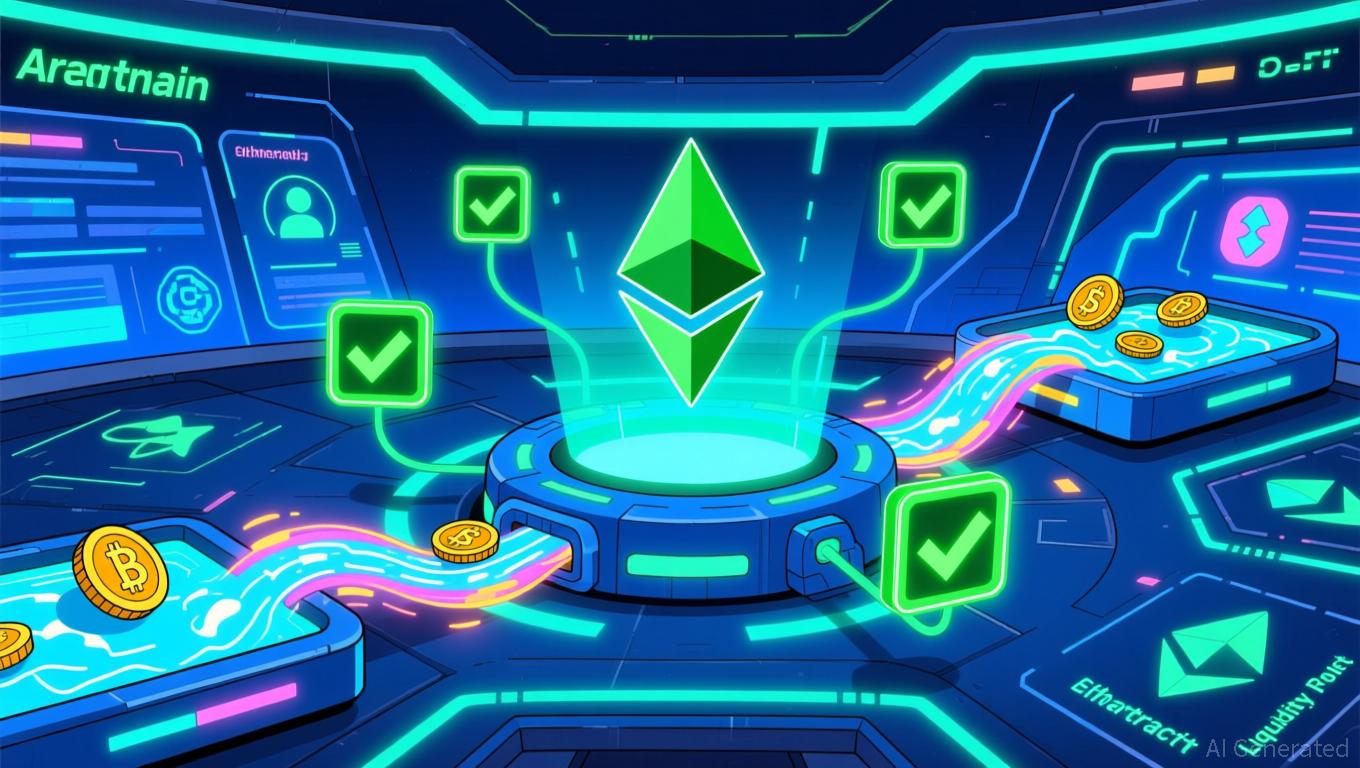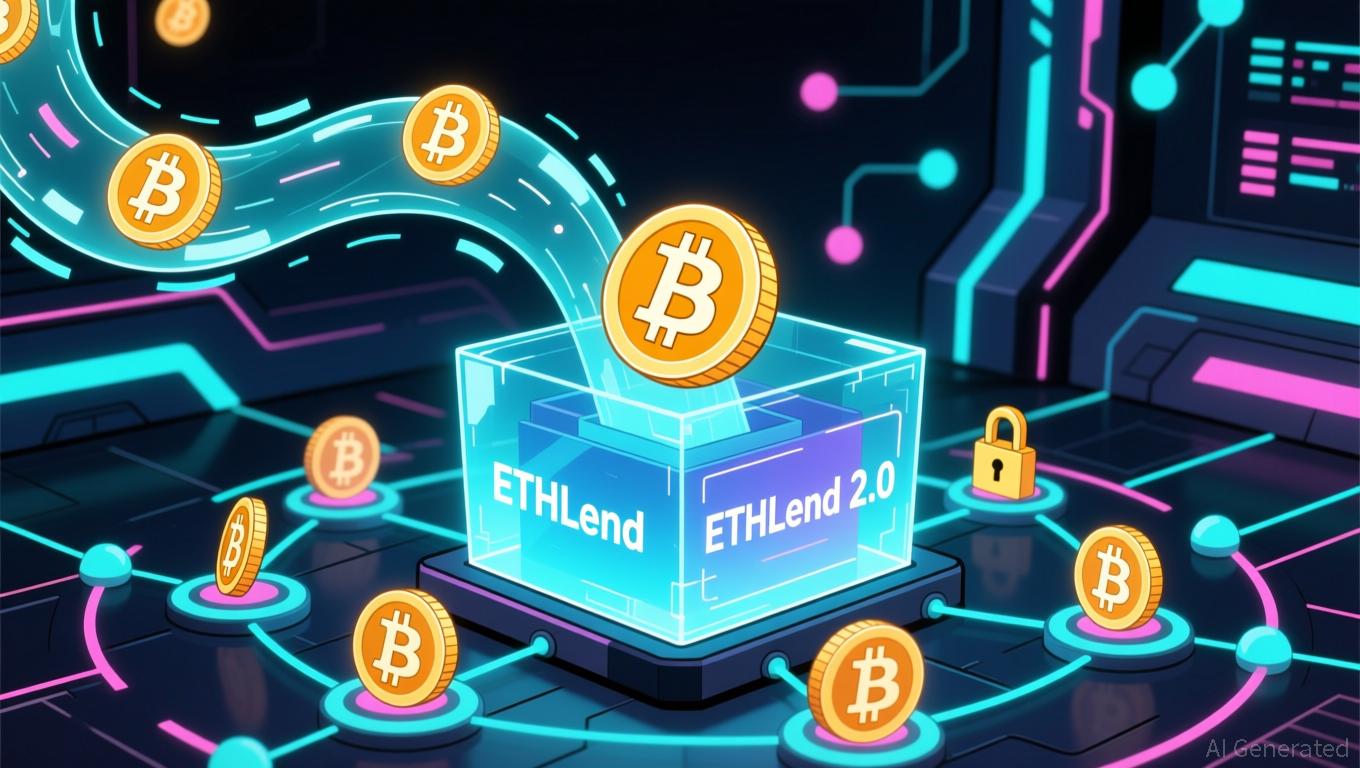Vitalik Buterin's Perspective on ZK Technology: Driving Crypto Infrastructure Forward and Enabling Sustainable Value Creation
- Vitalik Buterin champions ZK technology as Ethereum's scalability and privacy cornerstone in 2025. - He proposes removing modexp precompile to cut ZK computational overhead by 50x, prioritizing ZK-native efficiency. - ZK integration with MPC/FHE creates hybrid cryptographic stacks, accelerating institutional adoption and 30% stablecoin transaction volume via rollups. - Projects like Polygon's Katana ($512M TVL) and ZKP's ZK-native blockchain demonstrate ZK's transition from experimental to infrastructure
Buterin’s Push: Breaking Down ZK Scalability Obstacles
This year, Buterin’s standout initiative is his campaign to remove Ethereum’s modexp precompile, an outdated feature that significantly hampers ZK-EVM performance.
In addition to technical changes, Buterin advocates for combining ZK proofs with other advanced technologies such as multi-party computation (MPC), fully homomorphic encryption (FHE), and trusted execution environments (TEE).
ZK’s Expanding Influence in Crypto Infrastructure
Ethereum’s modular strategy for ZK integration—through upgrades like EIP-4844 and zk-rollups—has already yielded concrete benefits. Yet, initiatives such as Polygon’s Katana and Zero Knowledge Proof (ZKP) show that ZK technology is spreading beyond Ethereum’s boundaries.
Katana, Polygon’s DeFi-oriented ZK rollup, has amassed $512 million in total value locked (TVL), leveraging Polygon’s Agglayer framework to connect various ZK rollups
The move from theoretical frameworks (such as SNARKs and STARKs) to real-world applications has quickened ZK’s uptake.
Economic Impact: From Transaction Speed to Market Forecasts
The economic promise of ZK technology is evident in its capacity to solve scalability issues and meet institutional requirements.
Market forecasts further reinforce ZK’s economic outlook.
Nonetheless, obstacles remain.
Looking Ahead: Navigating Challenges and Regulatory Developments
Despite its advantages, ZK technology still faces hurdles such as high proof generation costs, hardware demands, and decentralization concerns
For those investing, opportunities exist in governance tokens, infrastructure services, and cross-chain liquidity platforms
Summary
Vitalik Buterin’s promotion of ZK technology goes beyond technical innovation; it’s a strategic effort to reshape blockchain’s foundation. By tackling scalability challenges and encouraging hybrid cryptographic solutions, he has made ZK a key component of Ethereum’s roadmap. At the same time, projects like Katana and ZKP showcase ZK’s shift from experimental to indispensable. As institutional adoption and market expectations converge, ZK’s potential for long-term value capture looks strong—provided that issues around decentralization and governance are properly managed. For investors, the ZK sector presents a promising mix of innovation and infrastructure, though careful navigation of its evolving risks is essential.
Disclaimer: The content of this article solely reflects the author's opinion and does not represent the platform in any capacity. This article is not intended to serve as a reference for making investment decisions.
You may also like
Why is MUTM's DeFi approach drawing in $18.9 million and 18,000 investors in 2025
- Mutuum Finance (MUTM) has raised $18.9M from 18,200 investors via a 250% presale price surge to $0.035 in Phase 6. - Its dual-lending model combines peer-to-contract and peer-to-peer mechanisms to optimize liquidity and capital efficiency. - Phase 6 nearing 99% completion highlights demand for MUTM's automated, intermediary-free lending via Ethereum-based smart contracts. - The project plans Q4 2025 launch of its public lending protocol on Sepolia testnet, emphasizing transparent decentralized ownership.

Global authorities suspend the growth of Biometric Blockchain due to worries about data privacy
- Worldcoin (WLD) fell 14% amid regulatory crackdowns, token unlocks, and market weakness, outperforming crypto's 9% decline. - Colombia, Philippines, and Thailand ordered operations halted and biometric data deleted over privacy concerns. - 37M WLD tokens ($25M) unlocked recently, worsening sell pressure as price consolidates near $0.63 resistance. - Analysts predict $0.75–$0.85 by 2025 if regulations clarify, but warn of potential drops to $0.26 amid unresolved compliance risks. - Project's viability hin

Bitcoin News Update: Aave's ETHLend 2.0 Disrupts DeFi's Dependence on Wrapped Tokens by Introducing Native Bitcoin
- Aave founder Stani Kulechov announced ETHLend 2.0's 2026 relaunch using native Bitcoin as collateral, diverging from wrapped tokens. - The hybrid P2P-liquidity pool model aims to enhance DeFi efficiency while reducing synthetic asset reliance through cross-chain BTC integration. - This revival aligns with growing institutional demand for non-wrapped BTC and could restore utility for the legacy LEND token. - Despite bearish market conditions, the move signals confidence in Bitcoin's foundational role for

The Rapid Rise of ZK Technology and What It Means for Cryptocurrency Markets
- ZK proof ecosystems saw 2025 breakthroughs in scalability, institutional adoption, and on-chain activity, reshaping blockchain infrastructure and crypto markets. - Projects like zkSync Era (27M+ monthly txns) and StarkNet (tripled TVL) demonstrated ZK-rollups' capacity to handle 15,000+ TPS, accelerating Ethereum's Layer 2 dominance. - Institutional giants including Deutsche Bank , Sony , and Nike integrated ZKP solutions for compliance, with Polygon securing $1B+ in ZKP development funding. - ZKP market